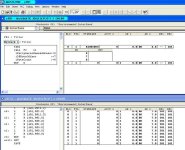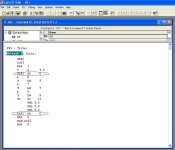Werner
Member
Hi there!
Does any of you have a program available for copying PIB data to a DB.
What I need is:
L PIB 512
T DB201.DBB0
L PIB 513
T DB201.DBB4
L PIB 514
T DB201.DBB8
etc.
I would like the start address to be adjustable (in this case 512 with a adjustable number of repititions after that ranging from 1 to 16)
Any cleaver ideas on how to do this in a way that is not increasing the PLC cycle time to much? Other wise I might be better of by typing it all.
(7x16 Byte transfers for the inputs and 7x16 Byte transfer for the outputs so that's 448 lines of code.....Which I might be able to generate in a source file but still a lot of work)
Does any of you have a program available for copying PIB data to a DB.
What I need is:
L PIB 512
T DB201.DBB0
L PIB 513
T DB201.DBB4
L PIB 514
T DB201.DBB8
etc.
I would like the start address to be adjustable (in this case 512 with a adjustable number of repititions after that ranging from 1 to 16)
Any cleaver ideas on how to do this in a way that is not increasing the PLC cycle time to much? Other wise I might be better of by typing it all.
(7x16 Byte transfers for the inputs and 7x16 Byte transfer for the outputs so that's 448 lines of code.....Which I might be able to generate in a source file but still a lot of work)






